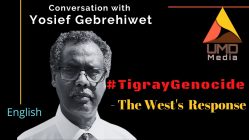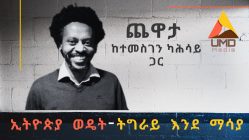Gebremichael Zeratsion, MD
August 20, 2024
Introduction
The Tigray People’s Liberation Front (TPLF) has been a formidable force in shaping the political landscape of both Ethiopia and the Horn of Africa for over 25 years. Founded as a revolutionary movement, the TPLF played a crucial role in overthrowing the brutal Derg regime in 1991. Under its leadership, Ethiopia experienced the emergence of democratic processes and rapid economic growth, becoming one of the fastest-growing economies in the world for over a decade. However, this period of transformation was tainted by the party’s leftist ideology and authoritarian practices, leading to significant challenges and controversies.
In Tigray, the TPLF is viewed with a mix of deep loyalty and skepticism. To many Tigrayans, the party is seen as a fierce defender of national interests. Yet, its true nature—rooted in Marxist-Leninist principles—has often been misunderstood. The TPLF prioritizes class struggle over national identity, leading to a disconnect between its ideological goals and the aspirations of the Tigrayan people.
The TPLF has faced internal conflicts before, most notably during the 2001 split that resulted in the purging of half its leadership, including many capable individuals. This division not only weakened the party but also caused fractures within Tigrayan civil society organizations and the broader population. However, the current split could be even more consequential, with the potential to lead to either disaster or an unprecedented opportunity.
Overview of the current TPLF Split
The recent split within the TPLF goes beyond mere factionalism; it marks a potential turning point. The TPLF has fractured into two main factions: one led by Getachew Reda, aligned with the interim government, and the other led by Debretsion Gebremichael under the TPLF secretariat. While the Debretsion faction convened a party congress, the Getachew Reda faction denounced it as illegitimate, resulting in the formal expulsion of Reda and his supporters from the party leadership.
This internal rift has raised concerns about escalating violence and political instability. The Tigray Defense Forces (TDF) are also facing challenges amid this split. Although the TDF has officially remained neutral, the risk of internal divisions cannot be overlooked. The Debretsion faction is likely to attempt to remove the current TIRA and establish a new government under its control, while the Getachew faction will resist these efforts, claim to be the original TPLF, and possibly form another political party with the same name. These highly volatile circumstances could lead to violence and even all-out war.
Risks of This Split
The split presents several risks that could worsen existing tensions:
1. Potential for Conflict with the Federal Government: If Debretsion’s faction attempts to undermine or take control of the TIRA, it could lead to direct confrontation with the federal government. Such actions would violate the Pretoria Agreement, which sets the terms for establishing the interim administration. The federal government might use these moves as a pretext to initiate military clashes, potentially escalating into an all-out war.
2. Internal Intra-Tigray Conflict: There is a significant risk of internal conflict within Tigray. The TIRA has some support from local security forces and the population. If Debretsion’s faction tries to assert control, it could result in violent clashes between factions loyal to the TIRA and those backing Debretsion. This internal strife would worsen the humanitarian crisis and further destabilize Tigray.
3. Further Political Contestations: The Getachew Reda faction may try to form a new TPLF party or claim legitimacy as the true TPLF. This could lead to further political fragmentation and disputes over recognition by the National Electoral Board of Ethiopia (NEBE). Such developments could weaken political stability in Tigray and complicate the situation further.
The Opportunity
Amidst these challenges, the split also presents opportunities. One of the most important opportunities emerging from this situation is the potential to separate party functions from state governance. Historically, the TPLF’s dominance over the state has led to inefficiencies and corruption. The current split could pave the way for a clearer division, with one group managing the government and the other focusing on party activities. This separation could lead to more transparent and accountable governance structures, fostering a more effective administration and creating a political environment conducive to democratic processes. With the next election set to occur under an interim government completely separate from the TPLF, there is a real chance for the election to be free and fair for the first time.
The benefits of separating state and party functions are particularly vital for Tigray, a region that has suffered greatly under the highly centralized, leftist, top-down administration of the TPLF. This system created a state apparatus that was effectively captured by the party, where administrators and public officials were appointed primarily based on their loyalty to the party and its leaders, rather than on merit or performance. As a result, lower-level administrators often ignored the needs of the people, knowing that their positions were secured by party allegiance, not by popular support. This lack of accountability led to widespread corruption and extreme inefficiencies.
Over time, leadership within both the party and the state fell into the hands of individuals selected more for their loyalty and willingness to say “yes” to previous leaders than for their capabilities. This mismanagement and incompetence had devastating consequences for the people of Tigray, culminating in a genocidal war exacerbated by leaders who were not only unable to foresee the dangers but also too arrogant to heed warnings from others.
While the opportunity to separate state and party functions is crucial, the likelihood of this outcome arising from the current split is slim compared to the risks, unless various stakeholders exert maximum effort to push both sides toward compromise and a win-win solution. In the following section, we will explore what a win-win solution could look like and what each stakeholder must do to achieve it.
The Solution
To mitigate the risks and capitalize on the opportunities, several strategic actions are essential:
1. Mutual Recognition and Compromise: The solution requires mutual recognition between the factions. The Getachew Reda faction should formally recognize Debretsion’s faction as the legitimate TPLF, while Debretsion’s faction should acknowledge the current TIRA as the legitimate governing body. Both factions should agree not to interfere in each other’s functions and focus on their respective roles. This compromise would not only prevent intra-Tigray conflict but also close the door to interference from the federal government and other foreign entities in Tigray’s internal affairs.
2. Avoiding Foreign Interference: It is crucial to prevent interference from foreign entities, including the federal government and neighboring forces like Eritrea. These external actors could escalate tensions and undermine the resolution process. The focus should be on resolving internal disputes through dialogue and compromise, without allowing external forces to influence or escalate the situation. Aligning with external forces to attack other Tigrayan entities should be considered a red line and entirely unacceptable.
What Each Stakeholder Should Do
To reach a solution and mitigate the risks of this split, each stakeholder should take the following actions:
1. Tigrayan Elites, Opposition Parties, Civil Societies, and the Public: These groups will be crucial in finding a resolution. Significant pressure from these entities is necessary to encourage both factions to compromise. They should avoid taking sides in the split, recognizing that this is primarily a party issue rather than a broader Tigrayan matter. Unfortunately, many of these groups are currently focused on taking sides, exacerbating the split instead of seeking win-win solutions and pushing for compromise. It is ironic that even those advocating for party-state separation are deeply involved in this intra-party conflict as if it were a state issue. Supporting efforts for party-state separation and promoting compromise will be key to turning risks into opportunities.
2. Debretsion’s Faction: Debretsion’s faction should concentrate on party activities and avoid trying to control or interfere with the TIRA. Acknowledging the TIRA’s legitimacy and avoiding actions that could escalate tensions will be crucial. The faction should continue engaging in constructive dialogue with the federal government and other stakeholders to restore its original party recognition while leaving the implementation of the Pretoria deal to the TIRA.
3. Getachew Reda’s Faction (TIRA): The TIRA should formally recognize Debretsion’s faction as the legitimate TPLF and avoid forming a new TPLF party. The TIRA should focus on effective governance and support efforts to restore the TPLF’s recognition through negotiations with the federal government. Prioritizing administrative functions and stability will help maintain public trust and address urgent issues. The TIRA’s primary responsibility should be governmental tasks, such as returning IDPs and restoring Tigray’s territorial integrity. It should take sole responsibility for implementing and following up on the Pretoria deal from Tigray’s side.
Summary
The TPLF split marks a pivotal moment for Tigray, presenting both significant risks and promising opportunities. Historically, the TPLF’s dominance has blurred the lines between party and state functions, leading to inefficiencies and corruption. This split could provide the chance to finally separate these roles, paving the way for more transparent and accountable governance. However, it also brings the risk of internal conflict and potential escalation with the federal government. To transform these risks into opportunities, it is crucial for all stakeholders to pursue mutual recognition and compromise, avoid foreign interference, and focus on resolving issues internally. Tigrayan elites, opposition parties, civil societies, and the public should refrain from taking sides and instead work toward a constructive resolution. Both TPLF factions need to acknowledge each other’s roles and support a stable interim administration, while the federal government should steer clear of actions that might escalate tensions. With the right approach, Tigray can navigate this challenging period and move toward a more democratic and effective governance model.
– Commitment to Peace Agreements: The Ethiopian government must demonstrate a genuine commitment to implementing the terms of the Pretoria Agreement. Without this, any hope for a peaceful resolution remains elusive.
– International Support and Pressure: The international community has a crucial role to play in pressuring Ethiopia to adhere to its peace commitments. This includes applying diplomatic pressure and offering support to ensure the agreement’s full implementation.
The path to resolving Ethiopia’s political crisis hinges on inclusivity, adherence to agreements, and sustained international support. Only through a committed and collaborative approach can the region hope to achieve lasting peace and stability.
Editor’s Note: The opinions expressed in the articles published on UMD Media are solely those of the individual authors and do not necessarily reflect the views or opinions of the editorial team or UMD Media as an organization. The publication of any opinion piece does not imply endorsement or agreement by UMD Media. Readers are encouraged to critically evaluate the content and form their own conclusions. Leave your comments below. Send us your thoughts and reflections to umd.media.2020 at gmail dot com.
Guidelines for contributors All contributions and comments submitted to UMD Media must adhere to the following guidelines. Respectful Language: Avoid using ethnic adjectives that generalize or portray an entire ethnic group in a negative light. Such language is harmful, divisive, and contrary to our commitment to fostering a respectful and inclusive environment. No Incitement: Content that incites hatred, violence, or discrimination against any individual or group based on ethnicity, race, religion, etc will not be tolerated. Constructive Dialogue: We encourage constructive dialogue and the sharing of diverse perspectives. However, it is essential to express opinions in a manner that respects the dignity and humanity of all individuals and groups. Moderation and Enforcement: Our editorial team reserves the right to moderate and, if necessary, remove any content that violates these guidelines. Repeat offenders may be subject to account suspension or banning. By contributing to our platform, you agree to abide by these guidelines and help us maintain a respectful and inclusive community.
Subscribe to UMD Media channel. Join UMD Media Telegram Channel: https://t.me/UMDMedia





